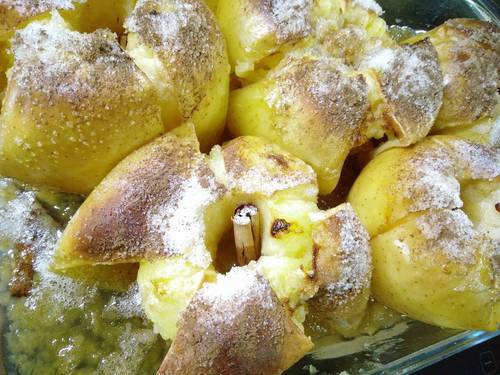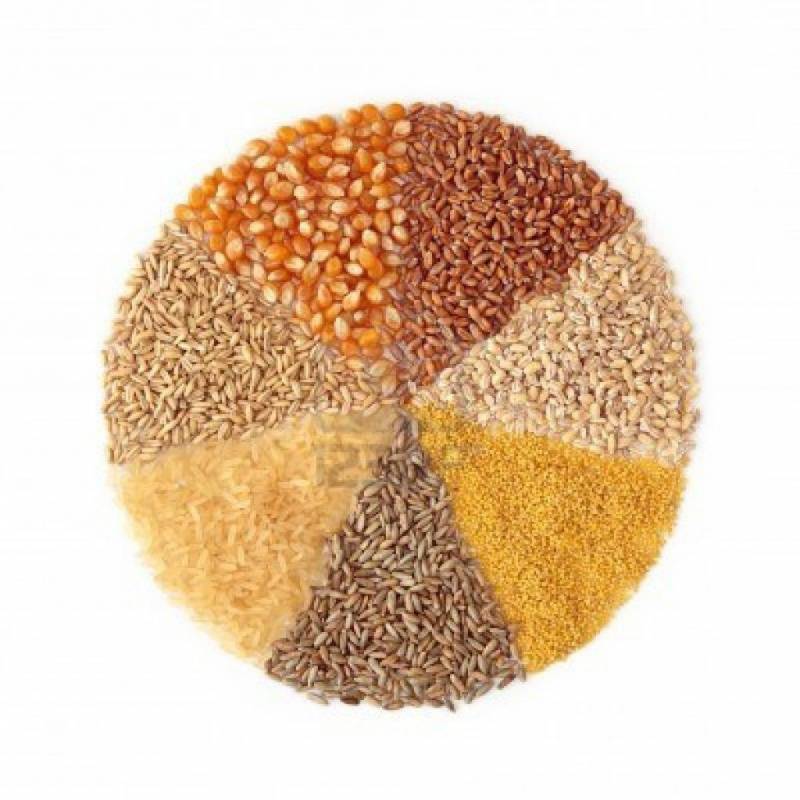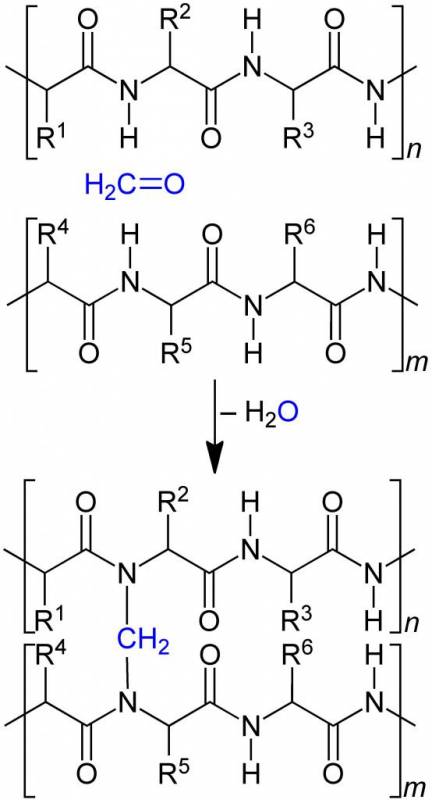10.07.2017
Allergy to casein in a child is one of the common problems. The allergic reaction is not chronic. Intolerance in children after two years of age occurs in 17% of cases. Casein is a special protein that is part of milk.
A pathological reaction is noticed by mothers after breastfeeding their baby. The body perceives casein as a foreign substance and releases immunoglobulin E into the blood.
Important! An allergy to casein prevents the mother from preparing a complete diet for the baby and providing it with the necessary nutrients.
Where does casein allergy come from?
Casein is found in the following foods:
- Cow and goat milk
- Cheese – Cheddar, and other types
- Kumis
- Sour cream and cream
- Kefir, curdled milk
- Ice cream
These foods contain complex proteins that settle in the stomach. It slowly unfolds, while giving energy to the body. Thus, it turns out that dairy products are very nutritious for the body and a person does not feel hungry for a long time.
In the intestines it is processed by a whole bunch of enzymes and this also takes time. Satiety lasts for a long time, so a milk breakfast is perfect for the busy schedule of even an adult.
However, it happens that the body perceives the complex structure of the protein as something inedible and begins to fight it, producing immune complexes. In this case, it is necessary to distinguish between an allergy to casein and an intolerance. This is a completely different type of pathology - lactose is to blame, for the breakdown of which the body does not have enough enzymes. There are mixed allergies: immune complexes are formed not only to casein, but also to other complex proteins.
Main symptoms
Symptoms depend on the age of the person, as well as his individual body reaction. In an adult, a mild type of the disease can progress like this:
- Gastroenterological syndrome includes heartburn, abdominal pain, bloating, nausea, vomiting, and diarrhea. Constipation occurs less frequently - this is an atypical form of the disease.
- Dermatological syndrome manifests itself as a rash in the form of vesicles, spots, papules, which itches terribly (itching). Swelling of the mucous membranes may occur, jaundice is visible on the skin, and conjunctivitis is visible on the sclera.
- Disturbance of normal breathing : difficulty breathing, bronchospasm. Due to swelling of the mucous membranes of the nose and larynx, there is a lack of air. The condition worsens and shortness of breath is felt when walking.
- General intoxication . Although there is no pathogen as such, the body reacts as if it were poisoned: fainting, fatigue, lack of sleep, malaise. Blood pressure decreases, but at the same time the heart rate increases.
A child, especially an infant, reacts to casein a little differently due to the fact that his body needs the product, but the stomach and intestines, due to infections, developmental abnormalities or insufficient work, do not want to break down the protein:
- Gastroenterological syndrome. After feeding, regurgitation and diarrhea occur periodically, there is blood in the stool, and the stool itself is liquid. Appetite decreases, and due to the fact that the child is malnourished, he naturally loses weight. Malnutrition develops, which is not very difficult to treat, but unpleasant. Also, at this age, it is extremely undesirable to deprive the body of nutrients: if you do not give it what it needs, the protein will be consumed from the muscles and other organs.
- Dermatological syndrome. Rashes appear, and they are very itchy. As a result, the child is irritable, cannot sleep, and is whiny. If he starts scratching these elements, he can cause an infection. This is even more difficult to treat. The mucous membrane of the larynx swells all the way to the nose, so much so that the baby begins to choke and coughs - a reflex attempt to get rid of the irritant.
- General intoxication. Again, the child’s irritability, poor sleep. After a few days he gets tired, tries to sleep, looks tired even after resting.
Diagnosis of allergies
The not entirely scientific “guess” method has found application here too. Mothers are recommended to remove allergenic foods from the child’s diet one by one and write down which foods the baby felt better after eliminating. The disadvantage of this method is that it is very difficult to make notes: if you forget to write down, you may get the wrong result.
The generally accepted method is blood testing for Ig E. In the analysis, the number of immune complexes is counted and compared with the norm. An increased number will indicate that the person has an allergy. The peculiarity is that blood can be taken only in the acute period - in the compensation stage, immunoglobulins are not needed, which means they will not be detected in the analysis.
What to do if you have allergies?
The first thing to do is eliminate casein products from your diet . Mothers will need formulas without milk or with a low-fat version (Nutrilak, Nutrilon). Remove: dairy, white bread, sausages. You should be careful with: milk chocolate, pasta, yogurt, river fish, cheese, eggs (rarely and a little), condensed milk, products with preservatives and dyes in their composition. It is especially important to read the ingredients of a new product before use.
What can be replaced: vegetables, calcium supplements, nuts, fish, phosphorus supplements, apples, pears, buckwheat, millet, rice, banana, broccoli, zucchini, cauliflower.
It is recommended to keep records that will mention the deterioration of the condition, as well as the diet during the deterioration. If new cosmetics are used, write them down too; sometimes they are made on a milk basis. It’s rational to try something new in the morning, because then you can really feel the body’s reaction.
Thus, casein allergy is a rather complex problem at first glance... basically, like all diseases. However, with the right diet, this will only be a feature of the body, which will not shorten life, much less deprive it.
A child is allergic to casein due to the lack of an enzyme capable of converting milk protein into useful calcium. In adults, this happens due to the body's loss of ability to absorb milk protein. Casein is found in large quantities only in cow's and goat's milk. Its percentage is also high in dairy products. The stomach and intestines are treated. Sometimes restoring the natural environment of the gastrointestinal tract helps.
General nutrition tips
An important point in treating the disease is diet. You need to adhere to general nutritional tips: study the composition of the product before purchasing, know which products may contain casein. You also need to keep a record of reactions to a particular product, eat each new dish only in the morning, so that you can track the body’s reaction. It is important for girls to know that some cosmetics may contain casein; it will also cause an allergic reaction on the skin. In addition to irritation, such cosmetics can lead to a deterioration in general condition. In the case of small children, you need to know what not to do if your child is allergic to casein.
What does protein consist of and where is it located?
Casein is a complex protein consisting of caseinogen and amino acids. Under the influence of bacteria, calcium caseinate is converted into casein and is found either in processed form in the stomach or in curdling products (cottage cheese, kefir, cheese, yogurt, etc.).
In nursing women, casein in milk reaches forty percent. Most of this protein is found in cow's milk (80%).
When ingested in food, the protein is partially digested and becomes casomorphin, a compound from the opioid group that can cause allergic reactions. This phenomenon is often called casein protein allergy, the symptoms of which are similar to food intolerances to certain foods. A solution can be found in replacing it with other milk formulas that do not contain cow's or goat's milk protein.
This is a very healthy protein used in artificial milk formulas. It contains calcium, phosphorus, amino acids, etc. Athletes eat it to gain muscle mass (included in sports nutrition). Due to its rich amino acid composition, it is used in dried form as an additive to dairy products to extend their useful life and improve taste.
Widely used in the medical industry. Ointments, creams, and surgical adhesives are made from it.
Thus, essential protein is found in almost all milk formulas, foods, sports nutrition and provides a lot of benefits. But in some cases, intolerance or hypersensitivity may develop, accompanied by manifestations of allergies.
Causes of intolerance
Young children are often at risk. “I used to feed the children milk, but they would break out in a rash and run to the toilet,” you might hear from a village milkmaid.
This intolerance is due to:
- Lack of lactose for proper protein absorption.
- Raw milk contains this protein in a poorly digestible form. By boiling it, you can increase its digestibility by the stomach.
- In adulthood, after forty years, there may be a loss of the enzyme for breaking down casein.
Possible intolerance is due to the recognition of other milk proteins as foreign, and an allergy manifests itself to one of them.
Manifestations
A casein protein allergy can be recognized by the following symptoms, which are common to most types of food poisoning or food allergies:
- rashes, skin dermatitis;
- redness;
- diarrhea;
- difficulty breathing, asthma attacks;
- swelling of the skin and mucous membranes;
- disturbance of heart contractions, drop in pulse;
- hepatitis, liver intoxication.
You will give your child dry formulas, but they may become intolerant to them.
Therefore, it is worth replacing dairy foods with a more gentle one (without casein) according to the pediatrician’s indications:
- soy products;
- rice milk;
- low-calorie broth, etc.
If an allergy to milk protein is proven by special immunoglobulin tests, milk of animal origin should be completely excluded from it. You should not eat raw formula milk.
If only the serum form of the disease is present, it is enough to boil the milk. However, in most cases, heat treatment does not help.
His health depends on what to feed his baby. It is important to recognize allergy symptoms in time and take action, contact your pediatrician for treatment.
Casein allergy or milk allergy is quite common. In this type of allergy, a person's immune system perceives harmless milk protein as a foreign substance and attacks them. In this case, specific antibodies are formed, which are called immunoglobulins E. The amount of harmful chemicals - histamines - increases in the body. The result of these processes is the presence of specific skin reactions, problems with the respiratory and cardiovascular systems, stomach and intestines.
How does it manifest?
How does a casein allergy manifest? It can manifest itself in either a mild form or a form that can be life-threatening. These are all a type of food allergy. It is characterized by: rash, itching, redness, swelling; from the digestive tract: abdominal pain, heartburn, nausea, diarrhea; respiratory system: swelling of the larynx and mucous membranes, difficulty breathing, suffocation; cardiovascular system: tachycardia, hypotension.
Each symptom of manifestation depends on the individual characteristics of the body’s sensitivity to each allergen. An allergy to casein in an infant may result in the following symptoms: regurgitation after eating food, constipation or diarrhea, blood in the stool, rashes, loss of appetite, irritability, poor sleep, bloating, mucus in the nasopharynx, weight loss.
Allergy to casein in a child
Most often, infants suffer from casein allergies; because of this, until they are six months old, they need to eat formulas and mother’s milk substitutes.
However, this deviation in children can be cured. If you follow dietary recommendations and avoid foods that contain milk and, accordingly, casein, by the age of two years (sometimes a little later, for example, by school age), in eighty percent of children, allergic reactions will simply disappear.
Somewhere around fifteen percent of children retain a persistent allergy to casein, which accompanies them until adulthood. This is often caused by bronchial asthma, chronic rhinitis (runny nose), as well as other allergic diseases.
Symptoms
In adults, an allergic reaction can manifest itself with the following symptoms:
Symptoms of casein allergy in children can manifest themselves in a broader form:
Causes of casein allergy
The causes of allergies to dairy products are as follows:
- when casein acts as an allergen (casein allergy). Casein is a protein that settles into a precipitate that looks like a cheesy curd;
- when the allergy is caused by milk whey proteins.
There are people whose bodies cannot tolerate only one type of protein, and there are those who cannot tolerate several or none of them at once. When proteins enter the body, the immune system begins to produce antibodies, which activates inflammatory cells.
The milk of different animal species has a similar set of protein molecules (for example, cow's milk and goat's milk), therefore, if you have milk intolerance to one of these products, allergic reactions will occur when consuming any of them.
Food allergies are inherited. If one of the parents suffered from a casein allergy, then the child’s predisposition to this disease will be much higher than that of other children.
There are frequent cases when allergic reactions from breast milk are actually provoked by cow milk, which the mother consumed during pregnancy. This is caused by the ability of casein to penetrate the walls of the placental barrier and reach the bloodstream of the fetus.
An allergy to casein in a child may occur due to the fact that the mother follows an incorrect diet during feeding. Milk intolerance can be caused by nuts, shrimp, chocolate and other similar foods.
Therefore, during the lactation period, a nursing mother must have fairly strict dietary restrictions.
Hello, dear readers. Today we’ll figure out why a child may react to casein contained in milk.
Allergic manifestations, how a doctor diagnoses the disease, what methods of therapy the specialist will use.
Allergic reactions in children to casein
Casein is one of the main proteins in milk (the most highly allergenic product is cow's milk). Casein is absorbed very slowly.
The most casein is found in cow's milk and goat's milk; this is 4/5 of all milk proteins. In addition, there are also whey proteins (1/5 of the total protein composition).
After milk, cheeses and cottage cheese contain the largest amounts of casein. There is slightly less of this protein in yogurt, fermented baked milk, and other milk-based products.
In case of an allergy to this protein, the immune system of children perceives casein as a foreign agent. To combat it, a large release of histamine occurs in the body, resulting in the development of allergic symptoms.
Allergy to casein in children is not uncommon. The mechanism for the development of an allergic reaction is as follows: the child’s immune system reacts negatively to the main protein of cow’s milk.
This reaction most often occurs in infants, and then they need to be fed with various adapted milk formulas for babies.
This type of food allergy in some children goes away when they are five to seven years old: the child’s body can already cope with milk (if adequate treatment was carried out at the time).
But in a small proportion of children, allergies persist for life, especially if they have diseases such as chronic runny nose or asthma. However, there may be no manifestations of allergies if you follow a diet and avoid products that contain casein.
As soon as a child develops even minor allergic manifestations after drinking milk, an urgent visit to the doctor is necessary. Self-medication is excluded.
What can be replaced
Elimination of symptoms of the disease in infants is aimed primarily at correcting the mother’s diet. If her hypoallergenic diet does not produce results, the baby is transferred to formulas containing hydrolyzed goat milk proteins.
If this measure turns out to be ineffective, soy-based mixtures are purchased and used for feeding. In older children and adults, milk and products containing calcium are replaced with plant foods: all types of cabbage, oatmeal and pearl barley, various nuts, leafy vegetables, and legumes.
Why do children have an allergic reaction to casein?
Doctors identify two main causes of allergic manifestations after children consume cow's milk. The first (and most common) is the child’s intolerance to casein protein, and the second option is an allergic reaction to whey proteins.
A child may not tolerate casein if one of the parents has a similar reaction.
In infants, the disease has a chance to occur if milk was included in large quantities in the mother’s diet during pregnancy: the main protein of milk easily enters the blood of children through the placenta.
If children are intolerant to cow's milk, they often react negatively to goat's milk, since both milk contains similar proteins.
Allergenic products
Products that can serve as irritants are divided into 3 groups.
Group 1 - highly allergenic products
- eggs;
- fish;
- meat broths;
- seafood;
- caviar;
- cereals (wheat and rye);
- berries with bright colors (strawberries and wild strawberries);
- vegetables with bright colors (peppers, carrots and tomatoes);
- citrus;
- exotic fruits (pineapple, kiwi, melon, persimmon, pomegranate);
- cocoa;
- nuts;
- honey;
- mushrooms;
- chocolate;
- coffee.
Group 2 - moderately allergenic products
- whole milk;
- dairy products;
- chicken's meat;
- beef;
- rice;
- oats;
- buckwheat;
- legumes (soybeans, peas, beans);
- root vegetables (beets and potatoes);
- sugar;
- fruits with a dull color (bananas, apricots, peaches);
- berries with a dull color (rose hips, lingonberries, cranberries, black currants).
Group 3 low-allergenic products
- dairy products;
- rabbit meat;
- turkey;
- horsemeat;
- lean pork;
- lean lamb;
- cauliflower and white cabbage;
- broccoli;
- zucchini;
- squash;
- cucumbers;
- corn;
- millet;
- pearl barley;
- green varieties of pears and apples;
- garden greens;
- red and white currants.
You need to understand that the division into groups is quite arbitrary, and allergic reactions are a purely individual matter.
A child may not have any problems with food groups 1 and 2, and yet have a strong reaction to turkey meat from the 3 “safe” group.

Symptoms
The most common signs of an allergic disease caused by casein are:
- Disturbances in the functioning of the gastrointestinal tract, manifested by diarrhea (in this case, mucus may appear in the child’s stool), vomiting, belching, loss of appetite, colic, flatulence.
- Redness of the skin, dryness, various rashes on the skin, urticaria, atopic dermatitis.
- Respiratory disorders, which include allergic rhinitis, bronchospasm, Quincke's edema. Bronchospasm and Quincke's edema are life-threatening for the baby.
Diagnosis of the disease and therapeutic methods
If a child shows signs of a casein allergy, parents should immediately take him to a specialist. The doctor will make an accurate diagnosis by prescribing a blood test or skin tests (these can only be done after the child is seven years old).
The presence of immunoglobulin E in the child’s blood plasma confirms an allergy to casein. Such an analysis can be done on a child who is six months old.
- Treatment begins with a specialist prescribing a diet for the child. All products containing casein are removed from the child’s menu. Actually, this is the main therapy. The remaining therapeutic measures are designed to relieve the acute symptoms of an allergic reaction to the main protein of milk.
- As for the baby, the diet must be followed by the nursing mother. If an infant's allergy does not go away, breastfeeding is stopped, and the baby is further fed with hypoallergenic formulas. Safe products are those that are produced on the basis of protein that undergoes deep breakdown.
- Antihistamines (Suprastin, Fenistil, Zyrtec) block the release of histamine and relieve signs of allergies. The doctor selects medications that have no side effects. Most often these are antihistamines of the latest third generation.
- To improve the functioning of the gastrointestinal tract, enterosorbents (Enetrosgel, Polysorb, Smecta) can be used, which will bind and remove the allergen from the child’s body.
- In the most severe cases, a specialist may prescribe hormonal medications to combat casein allergies in a child. They are appointed for a short time.
Preventive measures (as well as basic therapeutic measures) include the complete exclusion of milk proteins from the child’s menu.
How to feed a child with this type of allergy
It is important for parents to know what to feed their child if allergic reactions to casein occur. A specialist may recommend plant-based milk (for example, rice or soy). As complementary foods for infants, you can introduce pureed vegetables, pureed meat, and gluten-free cereals.
Since milk is a very important supplier of phosphorus and calcium, with a dairy-free diet the child needs to consume more foods that contain these microelements. A number of vegetables and sea fish are rich in these beneficial minerals.
The child’s menu may include porridge with water, bread, fruit juices and the fruits themselves, vegetables and vegetable salads, side dishes of cereals, potatoes, pasta, meat, fish, and beans. An allergist will tell you what a child can and should eat in case of allergic reactions to casein.
If an allergic disease has developed due to whey proteins, in the future the milk will need to be well thermally treated: these proteins will be destroyed. In case of such a reaction, children can eat all other milk-based products.
Parents again and again turn to the doctor with the question: is their child allergic to casein, what should not be included in his menu? The specialist will recommend excluding baked goods if they contain milk: buns, muffins, etc.
Casein is a complex protein found in dairy products. Under the influence of special enzymes in the human body, casein is broken down into nutrients and calcium. The absence of this special enzyme in the body leads to the development of an allergy to casein. The result of such food allergies is dairy intolerance.
What to feed a child if he has allergies?
Hi all! BB has always saved me, so this time too, girls, I’m turning to you!! We went and did an allergy screen and with the results we went to an allergist!!!
I have no idea what to feed the baby now! Considering that there is essentially nothing on the shelves of our stores, markets and supermarkets that could somehow diversify, zucchini is hard to find even at this time. I tried for a healthy diet, homemade kefir, warm boiled milk, milk soups, porridge You can’t spoil it with oil. If you are only allergic to casein, why not other fruits and vegetables?
Casein is found in all meat and dairy products. The most allergic nut is peanuts, but you should try the rest. Instead of regular milk, I add coconut milk to my child’s porridge and it’s healthier and tastier, but you just need to dilute it with two teaspoons of milk on a plate with porridge and add some water to the desired consistency.
The child is allergic and so am I. We eat river fish, casserole cutlets, instead of eggs there can be chia seeds, soybean chickpea flour. There is no need to be afraid of soybeans, soybeans are a very healthy and non-allergic product, but the additives in soy products are bad. So I either take soybeans and make curd and milk from them, or from soy flour. Homemade yoghurts made from soy milk are excellent. You may be allergic to sweets, check, spend one day without sugar.
Coconut sugar is less allergenic and lower in calories. Also, the allergy may not be to the product itself, but to the chemicals on it. For example, we are not allergic to strawberries from the garden, but we are allergic to store-bought ones, especially out of season. It’s also better for no one to eat white bread, there’s nothing good in it, but kids love rye bread without yeast and it’s very healthy, the main thing is to read the labels and choose without additives.
Venison and foal also contain casein, I don’t understand why they were allowed to you? White short-grain rice is not very good; unmilled steamed or wild rice is better. I cook cabbage soup and borscht for my child using vegetable broth and it’s tasty and healthy.
Any porridge with coconut milk, you can add dried fruits. Homemade soy cottage cheese, you can also add berries or dried fruits. Any legumes can be consumed. Don’t be afraid to try giving seasonal fruits and vegetables and see if there is a reaction or not. My child is not allergic to tomatoes during the tomato season, but he is allergic to them out of season. Not for persimmon, not for apricot either. The doctor limits all possible allergens just in case, but this does not mean that you are allergic to all of them.
This can only be determined experimentally. We are allergy sufferers too. Sometimes I make lazy cabbage rolls: cabbage, onions, a little carrots, then add rice, and simmer with some water. At the end I add boiled rolled meat. I make fruit pilaf: apple, prunes, dried apricots and rice. I pour some water and put it in the oven for about an hour. We are allergic to milk, perhaps to something else. Allergy tests were not taken. Sometimes I also serve rice cooked in Kuban water for an afternoon snack; for porridges with a banana - it’s filling and tasty.
I soak the rice for an hour and then cook it for only 15 minutes. Mine loves it very much. It’s not clear what to feed your child!? Have you ever had this happen? Good afternoon, girls! I'm just desperate!
Son 1. With the introduction of complementary foods, it became clear that he was allergic to carrots, apples, pears, and a little to gluten, a very slight reaction. Moms, hello! I really really need your advice, and the advice of experienced people who have already gone through this! Because I no longer know at all what to do, how and what to feed my child. We are now 11.5 months old. So, we are on IV. At 5 months
Per month Girls, we urgently need your help. My daughter is breaking out again and has rough crusts on her face. Most likely for fish and milk, what to feed?? What foods more or less do not cause a reaction, how to cook porridge now, without milk?? Not red, almost invisible to the eye, you can only feel it with your hands. At one time we removed dairy products, but it didn’t go away in 2 weeks. As for gluten, it’s more or less clear: we only give buckwheat, rice and corn porridge; We buy gluten free pasta..
Well, flour and other cookies, etc. In addition to this, there are allergies to goat milk, cow milk, powdered milk, cottage cheese. But no. A breastfed child does not need a nutritional assortment, but with older children the nutritional situation requires some knowledge. The Thais promote pediatric complementary feeding, so you won’t find a variety of canned purees and cereals, but Joint purchases Here people buy things at their real price. Flea market New and used. My community.
Create your own community of interests, publish materials and set your own rules of communication. Create a community. Answers to BB. Ask a Question. Find girlfriends. Find girlfriends. My diary. Connect with other moms and make friends, get support and answers to questions. Keep a diary. To help mom.
Photo contests Participate and win prizes! Test drives Apply and become a test drive participant. Horoscopes Mercury in the 3rd phase of the moon mysteriously affects the stars around you. Nutrition from one to three years.
Diet regimens, our kids’ favorite recipes. How to feed a baby who doesn’t want to eat and is it even worth forcing? When to introduce which product and how much in grams?
And many other questions about the nutrition of children of this age. Allergy to casein. Victoria February 27, Russia, Moscow. Olga Gavrilova December 23, Where did you get the idea that there is casein in meat? This is milk protein!!! It's not in meat! Masha March 8, Russia, Krasnoyarsk. We are also allergy sufferers, and accordingly our diet is almost the same as yours. Anna Seen on the website April 12, March 6, Russia, Khimki.
Foodborne illness
Doctors consider food allergies to be any manifestation of a negative reaction to foods. The immune system perceives allergenic foods as foreign and begins to release chemicals to neutralize them.
A reaction in people with hypersensitivity can be caused by a minimal amount of the allergen and even the smell of the product. The disease prevails in people with a genetic predisposition. Most often, food allergies develop or appear immediately after birth. Over 10-12 years of life, hypersensitivity in most patients weakens.
Peculiarities
An allergy to casein is the perception of the protein as foreign due to the impossibility of its breakdown. The body actively produces immunoglobulin E, and against this background, the level of histamine increases sharply. Antibodies accumulate in the blood, causing negative processes in the body: disruption of the gastrointestinal tract, respiratory system, skin rashes.
A feature of milk intolerance is its manifestation at an early age and the possible elimination of the problem as the body matures. Over time, the strengthened immune system of some patients learns to cope with the digestion of milk protein, and the problem disappears. Some patients are allergic to casein throughout their lives.
What is the connection with gluten?

Gluten is also a complex protein and is found in many cereal products. It enters our body through bread, pasta, cereal, baked goods and other flour products. Gluten allergy is also chronic and cannot be cured. In this case, a diet is also necessary, which must be strictly adhered to. Any allergy only brings inconvenience to life, so you need to adapt to this rhythm of life.
Reasons for development
Allergy to casein is a congenital disease that is inherited. The pathology occurs at the genetic level and manifests itself in the form of poor digestibility of milk protein. The body of a person suffering from the disease does not produce the special enzyme necessary to break down casein.
The following factors provoke the development of the disease:
- uncontrolled consumption of dairy products by the mother during pregnancy;
- disruption of the gastrointestinal tract;
- weak immunity.
The primary manifestation of allergies rarely occurs in adults. If cases of intolerance to dairy products have previously been identified in the family, you should carefully consider the organization of nutrition for the newborn.
Important! Dairy intolerance can develop after 40-50 years of age. The body loses the ability to produce the enzyme that breaks down casein. That is why people in adulthood are not recommended to abuse dairy products.
What tests should an adult take?

To diagnose allergies in an adult, you need to take tests to detect IgE levels. A routine blood test may show an increase in eosinophils, but this is not an accurate sign of a casein allergy; such levels can occur in other conditions. The skin test method is not used in all cases; it is based on applying the allergen to a scratch on the skin (it is done before the test, in the form of a small strip). Then the doctor looks at the body's reaction. The immunoblotting method is often used. It is based on an assessment of the reaction of an enzyme immunoassay. To the usual foods that contain casein, foods with gluten, milk, nuts, eggs, and seafood are added. The test can show whether an allergic reaction occurs to casein or other whey proteins.
What's prohibited
The leaders in casein content are cow's and goat's milk. Casein makes up up to 80% of the composition of these products. Accordingly, a large amount of the substance is contained in cheeses (Adygei, Gouda, Mozzarella, Cheddar, etc.) and cottage cheese. A sufficient amount of protein is contained in dairy products: kumiss, kefir, sour cream, cottage cheese, ice cream, yogurt, cream, fermented baked milk.
If you are allergic to casein, it is dangerous to eat foods that may also contain this substance:
Important! Dairy products should not be consumed by a nursing mother if the baby is allergic.
Allergy symptoms and the degree of their manifestation depend on age, as well as the individual characteristics of his body. In approximately half of patients suffering from protein intolerance, signs of the disease appear immediately after drinking milk: pain or rumbling in the stomach, attacks of choking, and skin rashes begin.
The rest are subject to a delayed reaction. Symptoms develop on the second or third day after ingesting a product containing the allergen. Most often, this type of reaction manifests itself in gastrointestinal disorders.
In general, a casein allergy is manifested by the following symptoms:
- Gastroenterological – nausea, heartburn, abdominal pain, bloating, diarrhea, sometimes constipation.
- Dermatological – rash, peeling, redness of the skin. Mostly skin rashes are localized in the face and neck. Sometimes the entire body is covered in spots. A characteristic symptom of a casein allergy is peeling of the lips.
- Associated with breathing problems - bronchospasm, shortness of breath, lack of air.
Important! Often an allergy to casein manifests itself as a general intoxication of the body. Symptoms are similar to poisoning: low blood pressure, rapid heartbeat, general malaise, aching joints.
What is casein?

Casein is a protein. It has a complex structure and is found in dairy products: cheese, cottage cheese, milk and others. It is an important element of products, since it contains essential amino acids. It is contained in milk in bound form, but when it enters the human body, it curdles in the intestines under the influence of enzymes and precipitates with fats.
This sediment can remain in the body for a long time and will slowly dissolve. Therefore, it is important to know what a child who is allergic to casein should not eat. Thanks to casein, milk and milk by-products have high nutritional value, and it is also a source of phosphorus and calcium.
Diagnosis and treatment
The most accurate diagnosis for casein allergy is made by eliminating dairy products from the diet. If after this the symptoms of the disease subside or disappear completely, there is no need to conduct additional allergy tests. The diagnosis is confirmed by a blood test to determine the presence of immunoglobulin E. Patients over 6 years of age undergo skin allergy tests.
Some mothers risk provoking feeding of the baby with milk to confirm the diagnosis. The method is strictly contraindicated, since the protein can cause anaphylactic shock or Quincke's edema.
It is impossible to cure the disease, so therapy is aimed at eliminating the consequences of protein entering the body. Following a diet that excludes milk is a prerequisite for the treatment and prevention of the disease.
Therapy for a newborn begins with transferring the nursing mother to a dairy-free diet. If the baby’s reaction to milk persists, you will have to stop breastfeeding.
In this case, the newborn is transferred to nutrition with a special hypoallergenic mixture (Nutrilak, Humana GA, NAN GA). Most often, by the age of two years of a baby’s life, the allergy to casein disappears, as the child’s immune system is strengthened.
An allergy to casein in an adult is treated by completely eliminating dairy products and replacing them with vegetable protein. For prevention purposes, it is recommended to exclude all products containing milk proteins. White bread, baked goods, sausages, and milk chocolate are excluded from the diet. Before using any product, carefully study the composition.
To relieve symptoms of the disease, traditional antiallergic therapy is taken:
- Antihistamines – Loratadine, Claritin, Zyrtec, etc.
- Sorbents for removing toxins from the body - Enterosgel, Smecta.
- Skin preparations for relieving irritations - Gistan, Lokoid, Drapolene.
- Drops to eliminate rhinitis - Flexonase, Vibrocil, Nasonex.
In some cases, an allergy to milk protein heals on its own by the age of 7-8 years. The body learns to process casein without developing pathological reactions. Upon reaching this age, they begin to gradually introduce dairy products into the child’s diet, observing the body’s reaction.
Important! If cure does not occur, parents need to warn employees of educational institutions about the presence of allergies, since the menu of school canteens can provoke an allergy attack in a child.
How to identify an allergen?
To identify allergens as soon as possible, you need to seek help from an allergist. However, this can be done at home, but it will take much more time, which can negatively affect your overall health.
Diagnosis of a baby
Since infants do not have their full immunity even before the age of 6 months, and the blood contains the mother’s immunoglobulins, any tests to determine the presence of antibodies will not be indicative. To identify the allergen in young children, it is recommended to keep a food diary with clear monitoring of what type of food was consumed and what symptoms appeared. It is such a diary that will help the allergist determine the true allergen.
Detection of pathology in children
If we talk about children, then, starting from the age of three, they can do skin tests, as well as take a blood test for the presence of specific antibodies to a particular allergen. It is at this age that the child has an already formed immune system, which reduces the likelihood of a false positive or false negative result.
Methods of examination of adults
A skin test or antibody test can quickly determine the cause of an allergic reaction. This is the main way by which any allergy is diagnosed, both in adults and children.
Folk recipes
People have invented and successfully used many remedies to treat food allergies. The most popular are the following:
- Mumiyo. Dilute 1 g of the substance in half a glass of water and lubricate the rash.
- Honeycombs are chewed 2 times a day for 15 minutes.
- Celery. Drink root juice 1 tbsp. 3 times a day before meals.
- Dandelion juice. The leaves of the plant are ground, diluted in half with water and taken 1 tbsp. morning and evening before meals
Recommendations
Excluding milk from the diet is the main measure to prevent casein allergies. In some cases, it is enough to heat treat milk to improve its digestion and absorption. In case of the serum form of the disease, it is allowed to consume fermented milk products.
Important! Some allergy sufferers are saved by replacing cow's milk with goat's milk. It contains 2 times less lactose, so it is better absorbed by the body of allergy sufferers.
Excluding milk from the diet leads to a lack of calcium and phosphorus in the body. Therefore, patients will have to replenish their reserves with other products. The menu includes nuts, sea fish, vegetables, and soy.
An allergy to casein is an unpleasant phenomenon that requires a complete change in diet. Paying close attention to food will help reduce the risk of a negative reaction from the body and avoid complications.










